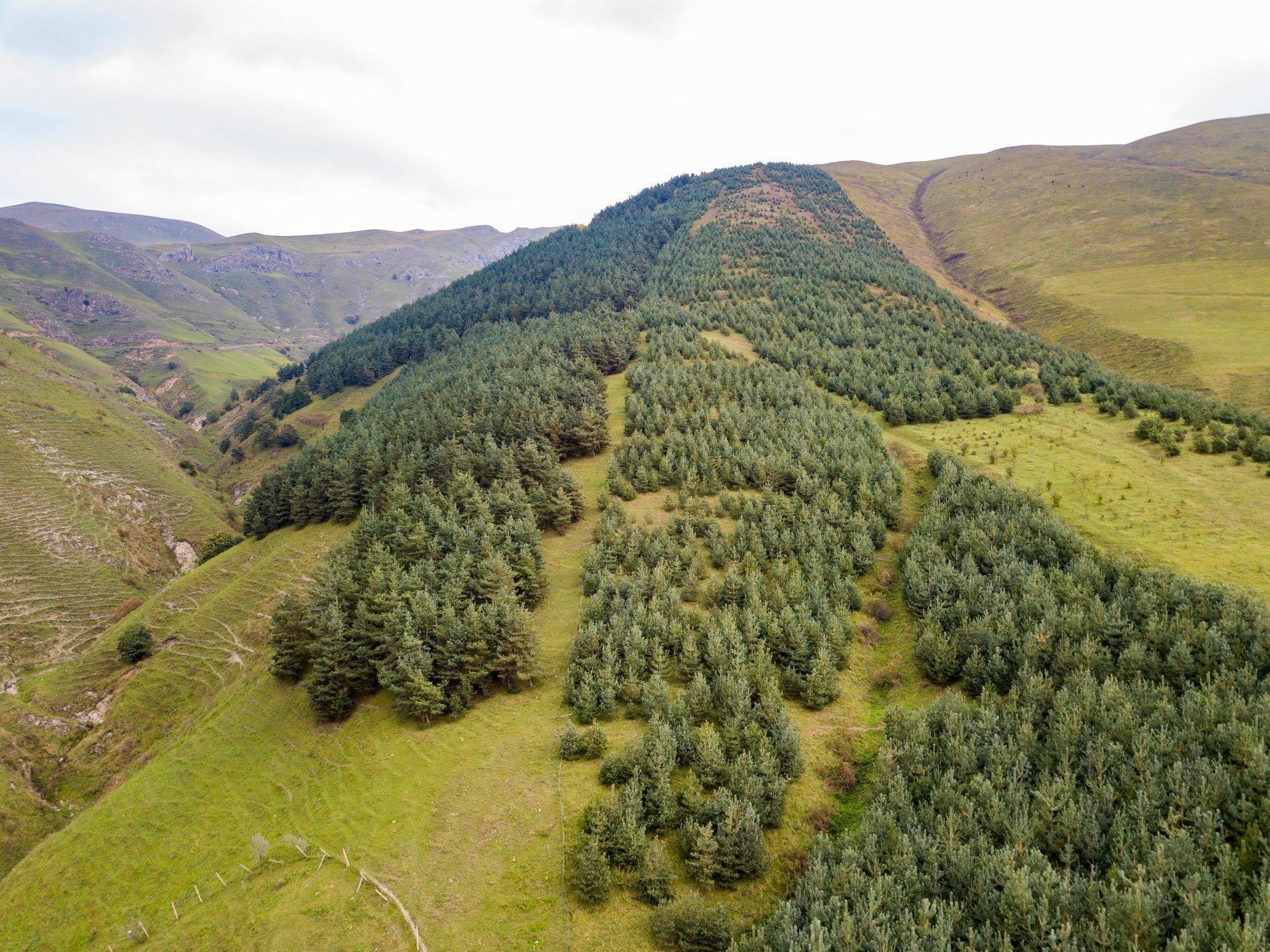
Sustainable Forest Management: Hrant Dink Memorial Forest Will Be Thinned In Order To Ensure the Health of the Site
By Vahe Martirosyan and Jason Sohigian
In the days after the senseless killing of Agos editor Hrant Dink in Istanbul in 2007, Armenia Tree Project (ATP) decided to plant a memorial forest in his honor. Advisory board member Nancy Kricorian penned a crowdfunding appeal about her friend and colleague, and a living legacy to the renowned intellectual was born. The effort was supported by people around the world, even from organizations within Turkey. On the West Coast, friends in the Armenian Bar Association mobilized support for the forest.
A new forest was established on two plots of land in Margahovit and Fioletovo villages in honor of Mr. Dink. Twelve years later, the location has become one of ATP’s model sites. The varieties of trees planted included pine and wild apple.
The site has been visited by numerous dignitaries including Rakel Dink, widow of Mr. Dink, Henry Morgenthau IV, the great-grandson of Ambassador Henry Morgenthau, and artist-activist Serj Tankian, who have stopped to pay their respects and to plant a tree in honor of this noted writer. The large forest is located on a hillside along the main road in the Lori province just across from ATP’s Ohanian Environmental Education Center and close to the Mirak Reforestation Nursery.
In following the best practices for planting a new forest, about 3,000 trees were planted per hectare at a density of one meter apart, which is done to take average tree mortality into account. Over time, a healthy, mature forest should have closer to 1,000 trees per hectare. Due to an exceptionally high survival rate of the trees planted, the Hrant Dink Memorial Forest has become overcrowded. This impedes the overall growth of the forest, forcing the trees to compete for soil nutrients, sunlight, and water.
As a result, ATP’s management plans for 2019 include carrying out thinning activities in the Hrant Dink Memorial Forest. The thinning will be done on two hectares of the 11 hectare plot in several stages, starting in spring and continuing for the next five years.
ATP has continuously monitored the Hrant Dink Memorial Forest, and the need for thinning was identified in 2018. It is the first forest planted by ATP that has required thinning in order to ensure the overall ecological health of the site.
In accordance with the country’s forest management regulations, ATP has consulted with experts from Armenia’s forestry department (HayAntar), the Environmental Department of the Provincial Administration, and the State Forest Monitoring Center. These departments will visit the forest to study the area, set up experimental zones, and estimate how many trees will be cut. Selected trees will be marked with a stamp for clear identification.
Thinning has proven to be an effective management tool for sustainable forest management worldwide. It will leave the rest of the trees in better health and allow them to flourish. Thinning can also stimulate more plants to grow on the site, increasing the likelihood that wildlife will inhabit the forest.
Another benefit is the reduction of wildfire risks and effects, as fires tend to spread more easily when trees are planted close together. There is a high risk of wildfires in Armenia as a result of the dry climate and ecological changes caused by climate change.
Several criteria will be taken into consideration before thinning activities begin. For example, only trees that are growing in the highest density will be removed. Trees growing on the steepest parts of the forest will not be thinned in order to avoid land erosion and degradation.
The removed wood will be turned into mulch, which ATP has been using as a natural form of weed and grass control in its new forestry sites. Placing mulch around small seedlings has been found to hold moisture and prevent tall grass and weeds from overcrowding the young trees.
After the thinning, hardwood species such as oak, birch, wild apple, and pear trees will be added to the forest in order to transform it to a more diverse forest ecosystem.
ATP’s forests are planted on community, publicly owned land with a 20 year lease at no cost, and ownership of the sites is passed back to the community after the lease ends. ATP’s forestry and environmental education departments work with officials and residents in those communities to teach them about the importance of forests and sustainable resource management, with the expectation that people will protect the site in future years. ATP’s leadership will continue to monitor the sites and provide consultation to ensure that the forest is managed in a sustainable manner for future generations.
Vahe Martirosyan is ATP’s Forester and Jason Sohigian is the organization’s Deputy Director.
Photo: An aerial drone photograph of one plot of the Hrant Dink Memorial Forest, planted by ATP in 2007.
 Videos
Videos Photos
Photos
Write a comment